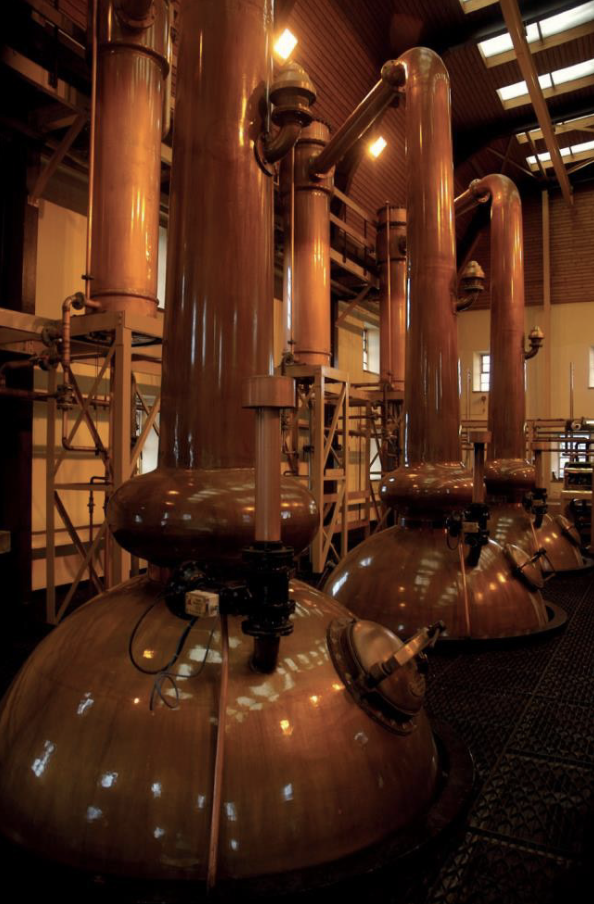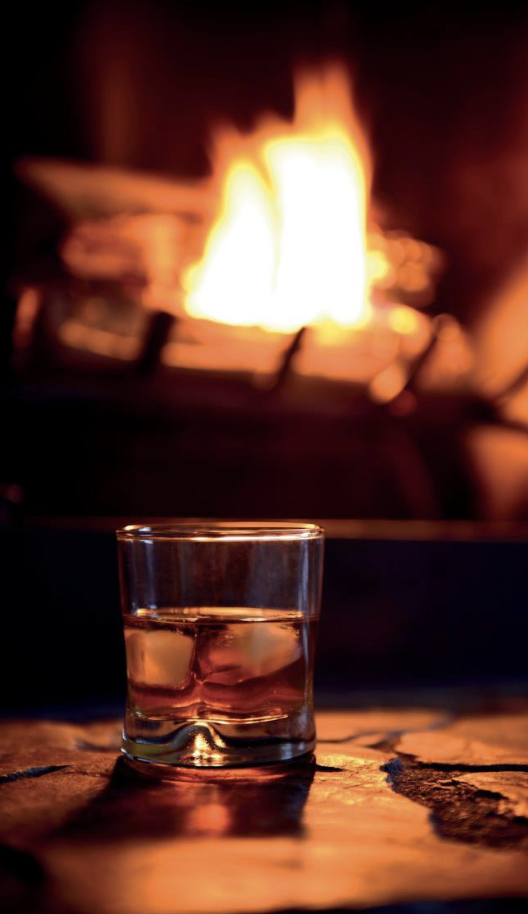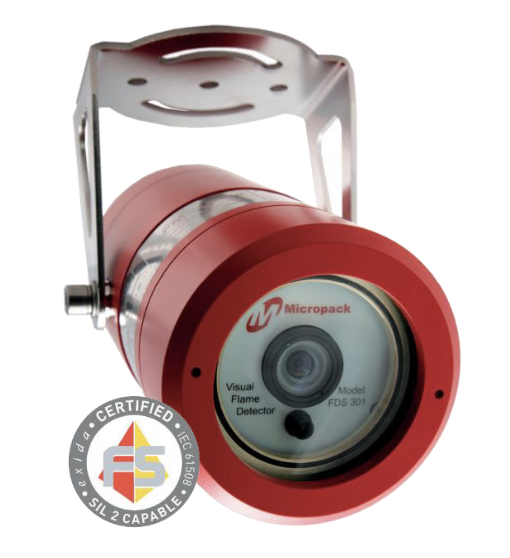The process of distilling Whisky includes 5 key steps, Malting, Mashing, Fermentation, Distillation, and Maturation. Each of these stages of production provides differing risks and will require appropriate levels of fire detection, tailored to the hazard the process presents.
When reviewing the Malting and Mashing stages, there is no alcohol present and the fire hazards are typically more of a domestic nature and therefore the conventional smoke/ heat detection strategies will suffice (where the most prominent fire hazards are phenomena including dust explosions, where the role of the fire detection is related to the detection of secondary fires). When looking at fermentation, maturation and particularly distillation, the hazards become a little more suited to the early detection of flaming fires.
During these stages we start to create a hazardous and potentially explosive atmosphere and therefore the standard detection technologies themselves become a spark potential hazard. This is not an issue when using optical based flame detection. This technology is borne out of the oil and gas industry; therefore these devices are literally made for hazardous area applications.
With the individual characteristics of the distillation process which makes each and every Whisky unique, it is as important , if not more so, that the building itself is protected from the devastating effects of a fire. This includes the bespoke stills and also the barrels of liquid gold where maturation takes place on site. On top of this there is also the responsibility of protecting the personnel and environment. This also includes a protection of the surrounding areas which can and have been affected by fires at breweries and distilleries in the past. And while we must protect the environment, it can also have a serious impact on flame spread. Flames can be bellowed by gale force winds (a stranger to no Scottish distillery) which can turn a relatively minor fire into a disaster.
When looking specifically at asset protection, the jewel in the crown of a distillery is the still. It is therefore crucial to achieve a fast response from the fire detection in order to prevent destruction of the creator of the whisky’s character. These are so unique in nature that their loss/ down time can be felt in market supply 10, 15 and 20+ years down the line.
Another area where fast response detection of flaming fires is crucial is during maturation in the bonded warehouse. There are many cases of devastating fires during the maturation phase which could have been prevented had the first responders had more time to protect the asset and mitigate the severity of the flame spread. The still house and bonded warehouse represent two areas where ‘passive ly natured’ detection such as traditional smoke and heat detectors provide a delay in detection.

WHY FIRE DETECTION IS REQUIRED?
The following represents previous fires within Distilleries or similar applications, and is by no means an exhaustive list, which highlights the importance of a sufficient fire detection system:
|
March 1960 Cheapside Whisky Bond |
|
|
Fire breaks out in the bonded warehouse storing over 1 million gallons of Whisky. This then resulted in rupture of some casks causing a significant BLEVE, blasting through the walls of the store and is still Britain’s worst peacetime fire services disaster. |
|
|
November 1996 Heaven Hill Distillery |
|
|
7 warehouse buildings and some 90,000 barrels of bourbon were consumed as a “river of fire” was created. One account of the fire stated “Flames leapt hundreds of feet into the air and lit the sky throughout the night.” Witnesses reported seeing whiskey barrels explode and rocket across the sky like shooting stars … a two-mile long stretch of the creek that supplied process water to the distillery was set ablaze for a brief time. Depending on the angels share and taking a rough estimate of £4,000 per barrel of bourbon (estimate based on 200 litre barrels at £20 per litre shop value), that’s a loss of £450,000,000 from the bourbon alone. |
|
|
May 2000 Wild Turkey Bourbon Fire |
|
|
Warehouse fire destroyed 17,000 oaken barrels – good news for the Bourbon Barrel manufacturers but a significant financial loss for the distillery. |
|
|
November 2012 Langley Green Distillery Fire |
|
|
Mixing of chemicals results in a fire which burns all night resulting in local residents being relocated due to the intensity of the flames and risk of secondary explosion. |
|
|
February 2015 Burghead Maltings |
|
|
Fire in the kiln area. Fire brigade required high elevation vehicle due to fire spread. Fast response detection may have prevented this by detecting at a point where the fire was far easier to control by those on site, and may have salvaged the asset. |
|
|
1993 Crown Royal (Waterloo warehouse) fire |
|
|
The exception to the rule that sometimes a fire can be good for business. Crown Royal ended up creating the XR (Extra Rare) whisky range from the barrels salvaged from a fire at its Waterloo Warehouse. One way to make a good thing out of a tragedy! |
|
Currently, under the ATEX Directive and DSEAR, Brewers and Distillers have a hierarchical responsibility: Do not have a flammable atmosphere; if you do, do not ignite it; if you do, do not hurt anyone. One way to achieve compliance with this third requirement is the application of optical flame detection. Traditional forms of fire detection (smoke and heat) are not reliable in detecting fires before they are a credible threat to human life, and are historically asset protection devices. Optical flame detection however, manufactured to protect personnel offshore, is designed to protect personnel, through their fast response to even relatively small flaming fires.

WHY USE OPTICAL FLAME DETECTORS?
Historically where fire detection has been applied in distilleries, these have been traditional domestic type detectors comprising of smoke or heat detectors. The issue with these devices is their passive nature in which they rely on the smoke or the heat to reach the detector. The problem with this is that there are environmental aspects of distilleries which combat against this.
An example would be the high ambient heat of the still house, where the smoke from a fire which is buoyant and rising will have to fight against the already high temperatures which have also risen, This results in thermal stratification pushing against the rising smoke, which subsequently means the detector will not go into alarm until the fire has developed even further to the point the smoke temperature exceeds that of the environment. In a large open space such as a still house, this can lose precious minutes of first responder time.
Another issue affecting the tradition al detection technologies is the fact that the character of a whisky is created by the Scottish climate and air, generally meaning many of the areas of a distillery will have openings to the elements which increase the exposure to the cross flow winds. This can disrupt the flow of smoke and again result in the smoke not reach ing the detector until the fire develops, delaying the detection time.
The natural solution for this is to apply active devices which ‘seek’ out the fire. As a result of this it is credible to reduce the total number of devices in the large open areas such as the malting’s and bonded warehouses, where a large field of view is achieved by the flame detector, reducing the number of devices required, compared to the common grid of passive smoke or heat detectors.
The real benefit of optical based flame detection is in the response time. With detection to even a relatively small fire (40 kW radiant heat output), these devices can respond anywhere between 1 and 10 seconds. This gives first responders a far greater chance of controlling the fire before any real damage can be done.
ADDED BENEFIT OF VISUAL BASED FLAME DETECTION
If optical based flame detection is selected there are a number of different options available, falling into either the radiant based family or the visual based family, each with their own strengths and limitations. When looking at the distillation process however, visual based flame detection provides many benefits which make it the technology of choice for this application.
From an operational standpoint, the reliability of these devices are typically very high. This is true even when exposed to the harshest of environments (being originally developed for application in the North Sea Oil and Gas Industry). Visual based flame detectors are not affected by the same stimuli which
can deteriorate the traditional detection technologies i.e. steam creating false alarms from smoke detectors and any dirt/ grime from the environment creating a fault in the device. The devices are also inherently applicable for application with the hazardous/ explosive environment of distilleries.
Maintaining the devices could not be simpler with the remote test torch which allows the operator to test the device from the ground up to 8m away from the device.
Other forms of optical flame detection based within the radiant family of detectors can be affected by modulating radiation which is typically present within the warmer areas of a distillery. This can place these detectors into false alarm, or desensitise/ blind the detector to a potential fire, depending on the unit selected. As visual based flame detection operates in the visual spectrum, the technology is not affected by these stimuli. Steam can also blind radiant based forms of optical flame detection, however as the attenuation of radiation in water is 1000 times less within the visual region of the electromagnetic spectrum than that of the radiant region, visual flame detection is the obvious choice to ensure reliable detection is achieved.
One of visual flame detection’s greatest assets however lies within the device itself. Historically, due to the intense heat of these fires, the cause of a fire can be very difficult to determine, as much of the evidence is destroyed. In fact the causes of many distillery fires remain ‘undetermined.’ With visual flame detection, the on board camera will provide a recording, acting as a ‘black box’ to show how the fire started and how it developed, which is subsequently recorded to the on board SD card for post incident review. This provides investigators with invaluable evidence post incident and is one of the most unique and beneficial aspects of visual flame detection.

About ProDetec
ProDetec was established in 2003 and is a quality ISO9001 company with an extensive client base throughout Australia and New Zealand. ProDetec is focused on client satisfaction and process efficiency. We have in-house and on-site service & commissioning capabilities and a team of qualified engineers.
